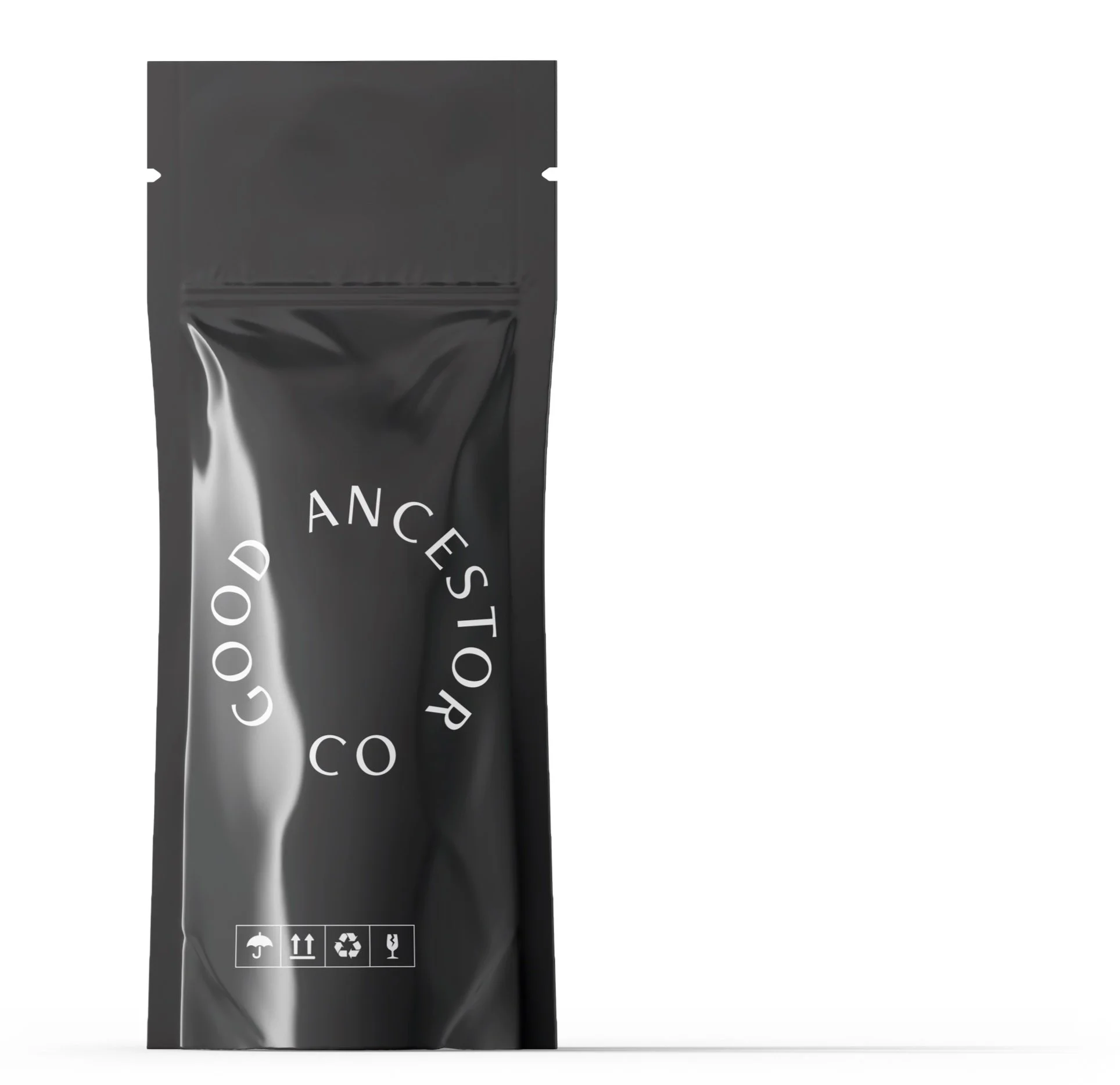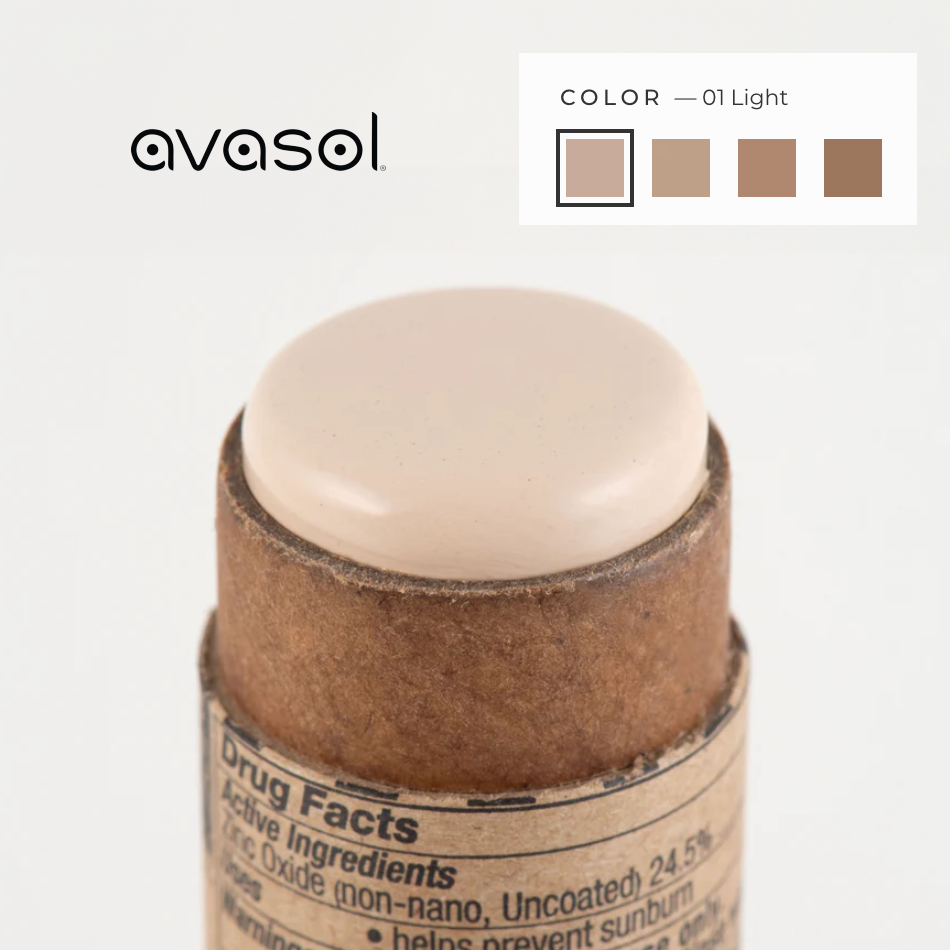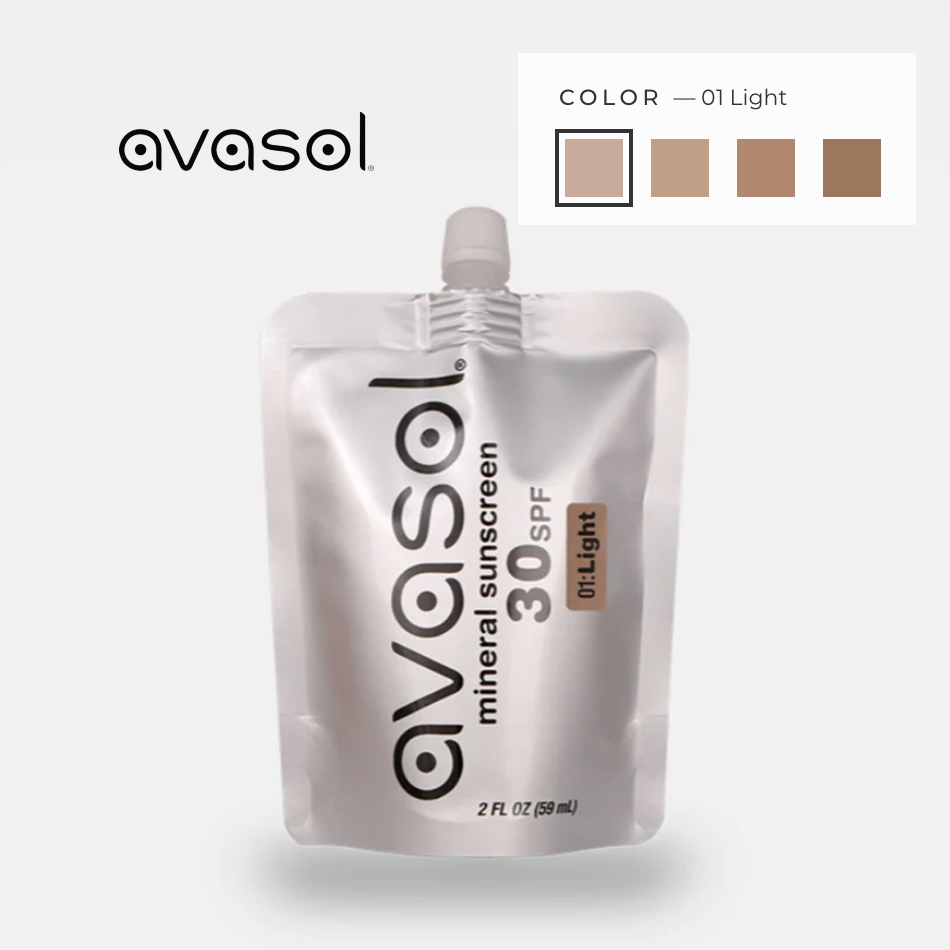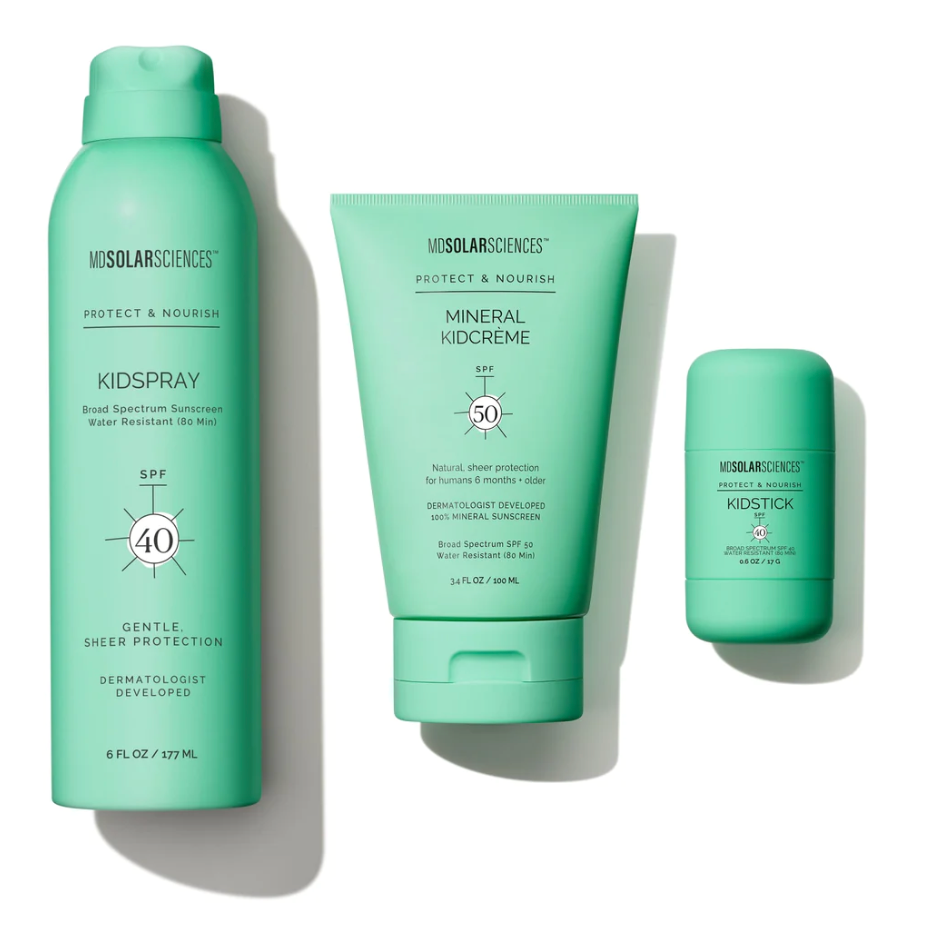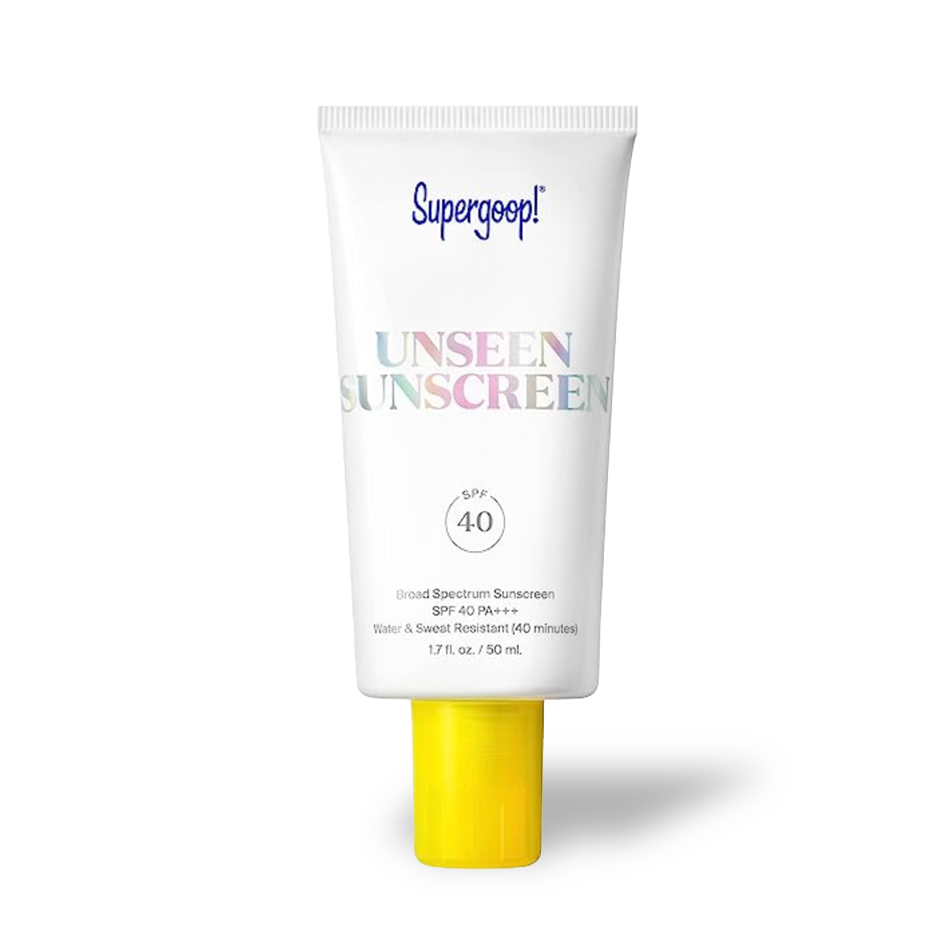Buyers Guide: Sunscreens decoded
5 Min Read
With the summer in full swing and the heat intensifying the sun’s increasingly strong UV rays in North America it is essential to prioritize your sun care habits. While sunscreen ideally should be a part of daily skincare routines year round, we understand if you've been a late in adopting this practice for you and your family. Like all things, sunscreen is only as good as what it is made of. So we wanted to take a comprehensive look at the two leading sunscreen types, so that you can make informed decisions.
As a general rule, whenever possible, opt for a non-toxic sunscreen that avoids harmful chemicals and reduces its impact on our oceans, commonly referred to as clean sunscreens. But keep in mind that marketing is always playing an influencer roll in an effort to grab your attention and thus, your purchasing power through fancy and colorful options with bold claims, images and often marketing created stamps of approval that are often not cleared by legitamate third party audits. We can get into the regulatory standards and enforcement in a later post.
Don’t worry, it’s not all doom and gloom we have some great science and our endorsements below. For now, we will start with the positives of sun exposure. Sunlight is a natural source of vitamin D, which is essential for healthy bone development in children and adults. Itood and Well-being: Sunlight can uplift children's moods and promote a sense of well-being, especially when they engage in outdoor activities.
If you genuinely care about the well-being of your skin and the health of our oceans, lakes and streams, then this curated list of the best clean sunscreens is perfect for you. I think we can all agree that the sunscreen isle at the local store is always a time consuming and overwhelming experience filled with uncertainty and doubt. Below you will find a concise summary of the essential factors to consider when shopping, along with our top recommendations. We are here to guide you in making informed decisions to safeguard both your skin and the environment.
The Significance of Sunscreen
Regardless of your skin type or tone, protecting yourself from harmful ultraviolet rays is of utmost importance. Unprotected sun exposure carries significant risks beyond the discomfort of sunburn. Alongside being mindful of preserving reefs, it is critical that your sunscreen offers protection against both UVA and UVB rays.
These two types of ultraviolet radiation can have adverse effects on your skin and overall health. UVA rays, with their longer wavelength, can deeply penetrate the skin, even on cloudy days, leading to long-term damage, premature aging, and skin cancer. UVB rays, on the other hand, are shorter but more intense, causing sunburns, immediate skin damage, and the development of the most severe forms of skin cancer. Ensure you look for the term "broad-spectrum SPF" on sunscreen labels, as it indicates protection against both UVA and UVB rays.
Understanding Clean Sunscreen
Clean and reef-safe sunscreens are specially formulated with environmentally friendly ingredients that are safe for aquatic ecosystems. The alarming estimation of 25 to 60 million bottles of sunscreen entering the ocean each year underscores the importance of using clean sunscreen. Conventional sunscreens containing chemicals can have harmful effects on delicate coral reef ecosystems and significantly impact marine life. Clean sunscreens offer effective protection against harmful UV rays without causing any harm to our precious ecosystems. Keep your eyes looking for mineral-based sunscreens with Zinc oxide or Titanium dioxide made without nanoparticles (not the spray kind).
Global research organizations conduct water sampling in all of our oceans. Unhealthy concentrations of chemicals found in sunscreens, such as oxybenzone and avobenzone, have been found in the waters surrounding coral reefs as a result of sunscreen washing off swimmers and ocean recreators. Research is showing that these chemicals can harm coral health and reproduction, potentially contributing to the decline of coral reefs.
Skin Tones and the Sun
When it comes to sun exposure, different skin tones have unique reactions.
Different skin tones burn from sun exposure due to variations in melanin levels. Melanin is the pigment responsible for the color of our skin, hair, and eyes. It plays a crucial role in protecting the skin from the harmful effects of UV radiation from the sun.
Let's break it down:
For those with fair skin, (Type I and II), they tend to burn more easily. Their skin contains less melanin, which provides natural protection from the sun, so they have to be extra cautious and diligent with sunscreen as they are more susceptible to sunburn. They tend to burn easily and rarely tan. Sunburns on fair skin can happen quickly with minimal sun exposure.
People with medium skin tones (Type III and IV) have a bit more natural protection, thanks to moderate melanin levels. They may still experience some sunburn, especially with prolonged exposure, so it's essential for them to wear sunscreen too. While they can still experience sunburn, it may take longer exposure to the sun's UV rays for them to burn. They have a higher chance of tanning.
Folks with darker skin tones (Type V) have more melanin, which gives them some built-in protection against the sun's rays. While they're less likely to burn, they're not entirely immune to sun damage, so sunscreen is still a good idea for them. They typically tan easily and rarely experience sunburn unless exposed to prolonged and intense sunlight.
Dark skin (Type VI) individuals have the highest levels of melanin, providing them with natural protection against the sun's harmful rays. They rarely burn and tan easily.
It's important to note that while higher levels of melanin offer some protection against sunburn, all skin types can still be damaged by UV radiation. Sunscreen and protective clothing should be used by everyone, regardless of their skin tone, to minimize the risk of sunburn, premature aging, and skin cancer.
Mineral vs. Chemical Sunscreen
When choosing between mineral and chemical sunscreens, it is vital to consider their respective advantages and disadvantages. Mineral sunscreens, also known as physical sunscreens, utilize fine particles of mineral-based ingredients such as zinc oxide or titanium dioxide to form a protective barrier on the skin. Acting like a shield, they efficiently reflect UV rays and are suitable for sensitive skin, while also being safer for both our bodies and the environment. However, one drawback of mineral sunscreens is that they may leave a noticeable white residue, often referred to as a white cast, especially on darker skin tones. However, emerging skincare brands like Utu and Avasol (Code “GoodAncestor” for 15% off) from California have introduced tinted mineral sunscreens in multiple shades to address this concern (we discovered Avasol over 7 years ago).
On the other hand, chemical sunscreens tend to be lightweight, easy to apply, and leave no visible residue, similar to many sunscreen sprays available today. However, they often contain active ingredients like oxybenzone and octinoxate, which can be harmful to both your skin and marine environments. In response to the potential harm to marine life, Hawaii recently enacted a law banning sunscreens containing these active chemicals, promoting the use of mineral sunscreens instead.
Thankfully, there are sunscreens available that, while not entirely natural, exclude oxybenzone and octinoxate, allowing them to be classified as reef-safe and making them a better choice for both the environment and your skin. For a comprehensive list of our top 10 picks, including mineral sunscreens and mineral-free clean chemical combinations, along with SPF information, keep reading.
Packaging Matters
Everyone thinks that plastic is recyclable. It is, or at least, some are. Of those few types, the reality of recycling them diminishes even further based on continent, region, country, state, county and municipality. The reality is, it is very exhausting to figure out what can be recycled and what actually is recycled. Due to this overwhelming fact, we at GA, have opted for the more tried and true packaging options due to their near guaranteed recyclability. Paper and metals. Furthermore, there are some great companies out there making refills for their containers, thus skipping the big packaging all together. With the final endorsement of the refill model being that the refill packs themselves works as great, mobile lightweight dispensers.
Here is why we say no to plastic containers. Plasctic packaging can have significant effects on ecology and the environment. Here are some key ways plastic packaging impacts ecology:
Pollution: Improperly discarded plastic packaging, especially single-use plastics like bottles can end up in bodies of water and natural habitats. This plastic pollution can harm wildlife, including marine animals that may ingest or get entangled in the plastic waste often to their demise.
Microplastics: Over time, plastic packaging breaks down into smaller fragments known as microplastics. These tiny particles can contaminate soil, water, and even the air. Microplastics have been found in various ecosystems, and can be ingested by humans and animals, potentially entering the food chain and posing risks to both wildlife and human health.
Habitat Destruction: The production and disposal of plastic packaging require raw materials, energy, and land. This leads to habitat destruction and environmental degradation, affecting biodiversity and ecosystems.
Greenhouse Gas Emissions: The production of plastic packaging involves the extraction and refining of fossil fuels, which is directly connected to greenhouse gas emissions. These emissions contribute to climate change, impacting ecological systems globally.
Recycling Challenges: While recycling can help reduce the environmental impact of plastic packaging, it poses several challenges. Not all plastics are easily recyclable, and recycling rates vary widely across different regions. As a result, much plastic ends up in landfills, incineration facilities, or the natural environment.
Chemical Leaching: Some plastics used in packaging can release harmful chemicals into the environment, affecting soil and water quality. This can have adverse effects on both wildlife and human health.
There really isn’t an upside to plastics anymore. With a number of eco conscious companies to choose from your ability to grab great products in no-plastic packaging is even easier.
Cream vs Stick vs Spray
Cream, Spray and paste sunscreens are different in their consistency and application, and they offer distinct benefits. Here's a comparison:
Cream Sunscreen:
Consistency: Cream sunscreens have a smooth and lotion-like texture. Smooth and easy application, making it convenient for everyday use.
Application: Cream sunscreens are generally easier to apply evenly over large areas of the body due to their smooth texture.
Absorption: Cream sunscreens are absorbed relatively quickly into the skin, leaving a more lightweight and non-greasy feel. Providing broad-spectrum protection against both UVA and UVB rays.
Suitable for: Cream sunscreens are suitable for most skin types, including normal, combination, and oily skin. Can be used as a daily moisturizer and sunscreen in one product.
Paste Sunscreen:
Consistency: Paste sunscreens have a thicker, denser consistency, similar to a balm or ointment. Providing a thick protective barrier on the skin's surface, making it more resistant to sun, water and sweat.
Application: Paste sunscreens require more effort to spread and blend into the skin due to their thicker texture.
Adherence: Once applied, paste sunscreens tend to adhere well to the skin, making them suitable for water activities or areas that need extra protection. Excellent for targeted application on specific areas that need extra protection.
Suitable for: Paste sunscreens are often preferred for specific areas like the nose, ears, or scars, where extra protection and staying power are desired. Can be useful for individuals with sensitive skin or specific skin conditions as it may contain fewer ingredients.
Spray Sunscreen:
Consistency: Spray sunscreens have a smooth and light texture with fast full body coverage. Fast drying, making it convenient for quick application on adults and kids as you race out the door. .
Application: Sprays are the easiest to apply evenly over large areas of the body due to their aerosol form.
Absorption: Sprays adhear quickly on the skin, leaving a more lightweight feel. This comes as the price of coverage as the thin spray can easily be sweat or rubbed off. These still provide broad-spectrum protection against both UVA and UVB rays but we reapply much more often.
Suitable for: Spray sunscreens are suitable for most skin types. Can be used as a easily and quick coverall if cream or paste moisturizer sunscreens are not available.
In summary, spray sunscreens are more versatile but you sacrifice thick coverage and will likely need to reapply more frequently. Cream sunscreens are suitable for overall body application, providing ease of use and quick absorption and most importantly more complete and longer coverage. On the other hand, paste sunscreens are ideal for targeted application on specific areas (we use this on the face mostly) that require extra protection and staying power, especially during water activities. The choice between spray, cream and paste sunscreen depends on individual preferences, skin type, and specific sun protection needs. Regardless of the type, it is essential to use a sunscreen that offers broad-spectrum protection and to reapply as needed for effective sun protection.
Good Ancestors Sunscreen picks (that we use at home!)
In our house we cover a number of different shades of skin and find the offerings from Avasol, MDSolarSciences and Supergoop are the perfect combination of color, texture and application type. For young and old our home stays sun safe thanks to these amazing companies and their products. Use code “GoodAncestor” during checkout for 15% off!
Play sun safe!






